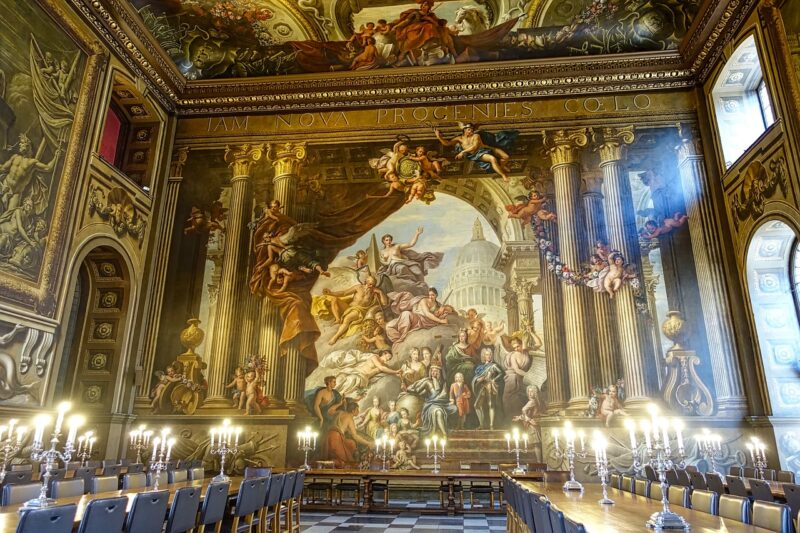Why Certain Architectural Masterpieces Are Considered Timeless Symbols of Human Creativity
November 17, 2024

Architecture has long been a reflection of the society and culture from which it emerges. Certain masterpieces from various periods have transcended time, serving not just as structures, but as symbols of human creativity, innovation, and expression. Beautifully designed, these buildings inspire awe, resonate with historical significance, and often embody the zeitgeist of their eras.
This article delves into the qualities that make these architectural wonders timeless, explores notable examples, and examines their cultural impact on society, artistry, and future generations.
1. The Definition of a Timeless Architectural Masterpiece
Timelessness in architecture can be defined by several key attributes that resonate beyond the physical structure itself. A masterpiece typically possesses:
- Innovative Design: Timeless architecture often showcases groundbreaking design, combining functionality with aesthetic appeal. Examples include the sweeping curves of the Guggenheim Museum or the geometrical precision of the Sydney Opera House.
- Cultural Significance: Many iconic buildings represent cultural values or historical events, such as the Parthenon in Greece, which symbolizes the power of democracy and the achievements of ancient civilizations.
- Adaptability: Timeless structures retain relevance through centuries. They adapt to changing technologies and societal needs while preserving their essence. The Tower of London serves as a royal palace, prison, and museum, demonstrating its changing roles through history.
- Emotional Impact: A great architectural marvel elicits emotions from those who experience it. Whether it’s the grandeur of St. Peter’s Basilica or the stormy beauty of Fallingwater by Frank Lloyd Wright, these spaces provoke thought and reflection.
These characteristics allow certain structures to be appreciated long after their completion, crossing generations and continuing to inspire.
2. Notable Masterpieces and Their Impacts
Several architectural gems stand as paragons of human creativity. Here are a few highlighted examples:
2.1 The Colosseum, Rome
An iconic emblem of Roman engineering, the Colosseum was once the largest amphitheater in the world, hosting gladiatorial contests and public spectacles. Its enduring design has influenced vast numbers of contemporary stadiums while representing the might of the Roman Empire. The use of arches and vaults showcases the skill of ancient Roman builders, making it a timeless symbol of creativity and resilience.
2.2 The Taj Mahal, India
The Taj Mahal is an exquisite example of Mughal architecture, merging Persian, Islamic, and Indian influences. Built by Shah Jahan in memory of his wife, it signifies love and devotion. Its symmetrical beauty, intricate craftsmanship, and breathtaking gardens symbolize the harmonious balance between nature and architecture. Its status as a UNESCO World Heritage Site highlights its cultural significance.
2.3 The Eiffel Tower, Paris
Initially criticized during its construction for its unconventional design, the Eiffel Tower has become synonymous with Paris. Gustave Eiffel’s innovative use of wrought iron not only exhibits technical prowess but also embodies the spirit of the Industrial Revolution. It stands as a gateway to understanding how architecture can influence national identity and tourism.
2.4 The Sydney Opera House, Australia
Renowned for its unique and sweeping profile, the Sydney Opera House is a marvel of modernist architecture. Its sail-like roofs inspire a sense of movement and fluidity, representing Australia’s artistic achievements. The structure serves not only as a concert hall but also as a cultural landmark that showcases creativity and innovation on a global stage.
3. The Role of Technology in Architectural Masterpieces
Advancements in technology have played a vital role in elevating architectural design. Modern architecture often harnesses cutting-edge technology to create more sustainable, efficient, and visually striking structures. Here are some key aspects of how technology contributes to architectural masterpieces:
- Innovative Materials: The use of glass, steel, and sustainable materials allows architects to explore new design possibilities and enhance the performance of buildings. The use of carbon-fiber structures is a modern example of how materials can redefine traditional designs, as seen in the Apple Park in Cupertino, California.
- Computer-Aided Design (CAD): CAD software enables architects to create complex geometries that were once impossible to conceptualize. The Guggenheim Museum in Bilbao, designed by Frank Gehry, is a perfect instance of dynamic forms made feasible through advanced design technologies.
- Sustainable Practices: Environmental considerations are paramount in modern architectural practice. LEED-certified buildings exemplify a commitment to sustainable design, reducing the ecological footprint while enhancing occupant wellbeing. The Bosco Verticale (Vertical Forest) in Milan demonstrates how architecture can harmonize urban environments with nature through innovative green designs.
By integrating technology, architects are continually pushing boundaries and shaping the future of architectural masterpieces.
4. Cultural Impact and Preservation of Masterpieces
Architectural masterpieces often encapsulate the cultural essence of the societies that birthed them. They provide insight into a civilization’s values, beliefs, and artistic expressions. As such, the need for preservation becomes essential:
- Cultural Identity: Iconic structures nurture a sense of pride and identity among locals. They serve as touchstones for cultural heritage that connects generations through storytelling and shared history.
- Tourism and Education: Many architectural masterpieces attract millions of visitors annually, contributing to local economies while educating visitors about the significance of these sites. The Great Wall of China, for instance, is not only a glorious testament to resilience but a living museum of ancient Chinese history.
- Conservation Efforts: The preservation and restoration of architectural masterpieces are essential tasks that ensure future generations can appreciate them. Global organizations, such as UNESCO, advocate for protecting sites of outstanding cultural or historical importance, such as Pompeii or Machu Picchu, to maintain their legacy.
Through preservation, architectural masterpieces may continue to inspire future generations and serve as reminders of human ingenuity and creativity.
Conclusion: The Enduring Legacy of Architectural Masterpieces
In conclusion, architectural masterpieces possess a unique ability to transcend time due to their innovative designs, cultural significance, emotional resonance, and adaptability. They tell stories about human creativity, community, and the ever-evolving nature of society. The careful integration of technology and a commitment to preservation ensures that these symbols of human creativity remain inspiring sources of awe and admiration.
By reflecting our past, celebrating our present, and envisioning our future, these masterpieces serve as timeless beacons of what is possible when humanity embraces creativity at its finest. Let us continue to honor, preserve, and celebrate these extraordinary structures for the legacy they hold for generations to come.








